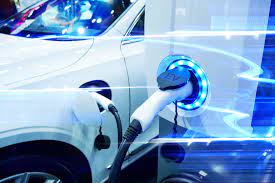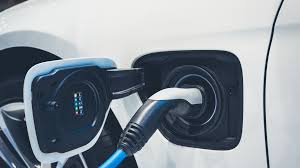- Volvo Cars has embraced advanced driver assistance systems to enhance driving experience, reduce emissions, and improve safety, playing a crucial role in the transition to a low carbon future.
- These systems optimize energy efficiency, adapt to traffic conditions, and promote eco-friendly driving habits, contributing to greener and more sustainable driving practices.
- In Volvo’s electric vehicles, the integration of advanced driver assistance systems brings numerous benefits, including enhanced safety, insurance incentives, and environmental advantages, further driving the shift towards a safer and eco-conscious automotive industry.
Volvo Cars has wholeheartedly embraced advanced driver assistance systems to not only enhance the driving experience but also to play a crucial role in reducing greenhouse gas emissions. These systems are designed to make driving safer, more convenient, and highly efficient, providing an added layer of protection to drivers and significantly reducing the risk of accidents.
Shackle insulator is a type of insulator used on low-voltage transmission lines. Its design helps to provide electrical insulation and mechanical support for the conductor of overhead transmission lines. Shackle insulators are mainly from materials like porcelain, glass or polymer which help resist different environmental conditions.

Driving Towards a Low Carbon Future
As the world races towards a low carbon future, numerous technologies have been developed to mitigate emissions of greenhouse gases and harmful substances into the atmosphere. Among these technologies, electric vehicles stand out as a sustainable and environmentally friendly alternative to traditional fossil fuel-powered cars. Companies like Tesla have already harnessed this technology to manufacture electric vehicles, contributing to the green transition. Volvo, too, has shifted its focus towards developing Advanced Driver Assistance Systems (ADAS) through the use of superchargers.
The Green Benefits of Advanced Driver Assistance Systems
These ADAS technologies not only benefit the driving experience but also contribute to the green transition in several ways. First, they enhance energy efficiency by incorporating features like adaptive cruise control and traffic jam assist, leading to smoother driving and optimized energy consumption. This, in turn, results in reduced emissions and a more environmentally friendly driving experience.
ADAS features such as automatic braking, forward collision warning, and lane departure warning help prevent accidents and reduce the severity of collisions, ultimately leading to safer roads, lower vehicle repairs, and decreased emissions. Additionally, these systems adapt to traffic conditions and maintain safe following distances, optimizing traffic flow and reducing congestion. As a result, idling time is reduced, leading to lower fuel consumption and fewer emissions.
The Rise of Autonomous Driving and Eco-Driving Feedback
The rise of autonomous driving made possible by ADAS paves the way for even more benefits, such as route optimization, reduced traffic congestion, and further improvements in energy efficiency through coordinated traffic management. Moreover, some ADAS systems provide eco-driving feedback to drivers, encouraging fuel-efficient behaviors like gradual acceleration, coasting, and smooth braking. This promotes greener driving habits and improves overall fuel efficiency.
Electric Vehicle Integration and Environmental Awareness
For electric vehicles, ADAS technologies are integrated to optimize energy use and driving range, thus maximizing their efficiency. These technologies also play a vital role in monitoring the vehicle’s surroundings, detecting obstacles, and providing real-time alerts to assist drivers in avoiding accidents. Battery management features in ADAS systems for electric vehicles ensure optimal battery performance, prolonging battery life and facilitating efficient charging and discharging.
The Advantages in Volvo’s Electric Vehicles
In the context of Volvo’s electric vehicles, the benefits of advanced driver assistance systems are numerous. They not only enhance safety, driving convenience, and efficiency but also bring advantages like pre-crash preparation, insurance discounts, semi-autonomous driving, environmental benefits, and collision data collection. Other benefits include enhanced driver awareness, reduced driver fatigue, traffic efficiency, parking assistance, and improved safety.
Conclusion
In conclusion, Volvo’s adoption of advanced driver assistance systems represents a significant step towards a safer, greener, and more sustainable future of driving. These systems have the potential to revolutionize the automotive industry and contribute to a low carbon future.
ADAS in Volvo Cars reduce emissions through optimized energy efficiency and accident prevention.
ADAS benefits electric vehicles in Volvo by optimizing energy use, enhancing safety, and prolonging battery life.
Shackle insulator is a type of insulator used on low-voltage transmission lines.


